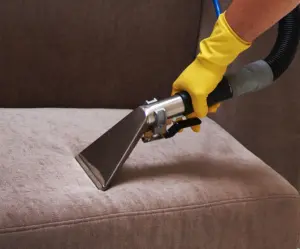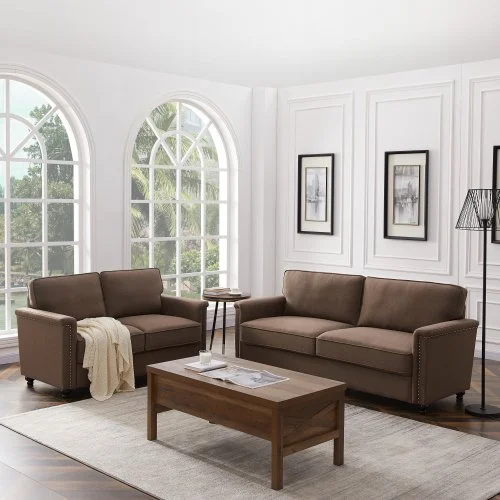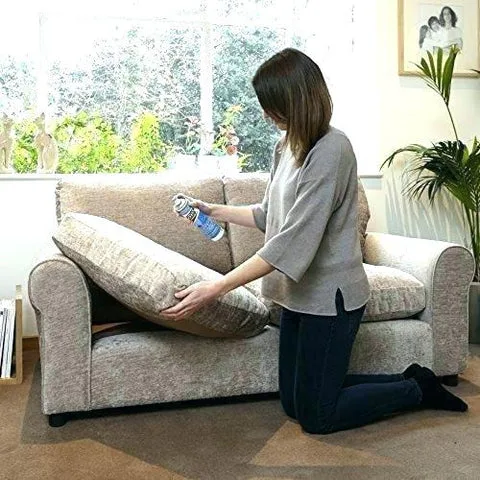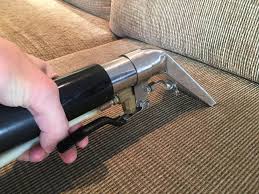5 Signs Your Upholstery Needs Professional Cleaning
5 Signs Your Upholstery Needs
Upholstery cleaning is a critical part of home maintenance. While your furniture adds comfort and style to your living space, it also collects dirt, dust, and allergens. This accumulation not only affects the appearance of your furniture but can also lead to adverse health effects. In this article, we will discuss the importance of professional upholstery cleaning and explore some of the signs that indicate that your upholstery needs professional cleaning. We will also provide tips to help you maintain your furniture on your own, between scheduled cleanings.

It is a well-known fact that regular upholstery cleaning can help to improve the air quality in your living or working space. Accumulated dust and other pollutants can trigger allergies, asthma, and other respiratory problems. By keeping your upholstery clean and free of these contaminants, you can reduce the risk of triggering these health issues.
Regular cleaning of your upholstery can also help prolong its lifespan. Dirt and grime can cause significant wear and tear on your furniture, leading to discoloration, stains, and even structural damage. By keeping your furniture clean and well-maintained, you can ensure that it lasts longer and looks better. This can help you save money in the long run by reducing the need for expensive replacements.
Keeping your home clean and well-maintained makes it more enjoyable for you and your guests. Clean furniture and upholstery create a warm and inviting atmosphere.
To ensure that your upholstery stays in good condition, be attentive to signs your upholstery needs cleaning and follow maintenance tips. This will help your furniture continue to contribute to your well-being and ultimately save you money.
Signs That Your Upholstery Needs Cleaning
 1. Stains: Stains on your furniture are unsightly and can cause odors if left for too long. They can also be challenging to remove, making it important to address them immediately.
1. Stains: Stains on your furniture are unsightly and can cause odors if left for too long. They can also be challenging to remove, making it important to address them immediately.
2. Odors: If you notice a musty smell in your home, it could be a sign of a buildup of dirt and other contaminants on your furniture. This not only causes unpleasant odors, but it can also cause respiratory issues if left unaddressed.
3. Allergies: If you or anyone in your household has allergies, dirty upholstery can exacerbate symptoms. Allergens like pet dander, dust mites, and pollen can accumulate in your furniture and cause allergies to flare up.
4. Appearance: If your furniture looks dull and dingy, it’s time for a deep cleaning. Over time, dirt and grime can accumulate on the surface of your furniture and make it look less appealing.
5. You may have kids, pets, and seniors in your life, and if so, you’re going to want to make sure you know how to handle any accidents.
However, there are other compelling reasons to consider taking action:
 If you need more motivation, it’s common for people to wait for a significant life event to spur them into action.
If you need more motivation, it’s common for people to wait for a significant life event to spur them into action.
Your baby will soon be crawling, so it’s important to have a clean and safe environment. If you’re having your room painted or installing new carpet or flooring, it’s a good opportunity to have your sofa cleaned as well.
- If your sofa has been in storage, in the basement, or in the garage, it’s likely accumulated dust and dirt and needs a thorough cleaning.
- If you’re planning to give the sofa to your daughter, it’s a thoughtful gesture to have it cleaned first.
- If you’re moving to a new house, it’s a great time to have your sofa cleaned before transporting it to the new location.
- Perhaps your sofa has become filthy, especially where your husband sits, and it’s time for a deep cleaning.
- If your upholstery has a bad odor from your dog, kid, or husband, it’s essential to have it professionally cleaned.
- If your baby had an accident while potty training, it’s critical to have the sofa cleaned to maintain good hygiene.
- If your dog keeps marking on the sofa, it’s important to have it cleaned to discourage this behavior.
- If your cushions are filthy, it’s time for a thorough cleaning to keep your sofa looking and smelling fresh.

How to Keep Your Upholstery Clean
Vacuum Regularly:
 One of most practical ways to keep your furniture clean is to vacuum it often. Use an upholstery attachment to remove any loose dirt and debris. Make sure you use one that has a nozzle or crevice tool that can reach into those hard to get seams.
One of most practical ways to keep your furniture clean is to vacuum it often. Use an upholstery attachment to remove any loose dirt and debris. Make sure you use one that has a nozzle or crevice tool that can reach into those hard to get seams.
When vacuuming upholstery, it’s important to adjust the suction power to avoid damaging the fabric.
Start with a low power setting and gradually increase the suction until you can clean effectively without damaging the upholstery fibers.
Vacuum in both directions and make overlapping passes over the same area to ensure that all the dirt and debris are covered. This helps to loosen and remove any stubborn dirt or debris that may be embedded in the fabric.
Check the vacuum and empty the dustbin often because a full dustbin can reduce the suction power and prevent the vacuum from working correctly.
Spot Clean Spills:
Whenever there is a spill, it is essential to clean it up immediately to prevent it from becoming a stubborn stain. The longer a spill sits, the harder it will be to remove. For example, red wine can leave a stubborn stain on your upholstery if left untreated for an extended period. Use a clean, damp cloth to blot (not rub) the area gently. Avoid rubbing the spill as this can make it spread and create a more prominent stain.
Hire a Professional:

Residential Upholstery Cleaning
For a thorough deep cleaning, consider hiring a professional upholstery cleaning service. They have the skills and equipment necessary to clean your furniture thoroughly and effectively. Professional cleaning can help remove stains, eliminate odors, and give your furniture a fresh look. Also, professional cleaning will help you extend the life of your furniture by removing accumulated dirt and dust that might damage the fibers.
Protect Your Furniture:
You may protect your furniture from spills and stains, by using protective covers. These can help prevent accidental spillages from causing permanent damage to your upholstery.
Protective covers are also an excellent way to extend the life of your furniture. For instance, if you have pets that tend to shed, using protective covers can help you keep their hair off your furniture and prevent it from sticking to the fibers.
Here are some tips on how to choose protective covers that are safe for your furniture and user:
Choose the right material: Protective covers come in a variety of materials, including cotton, polyester, and microfiber. Consider the type of furniture you have and the level of protection you need. Cotton covers are breathable and easy to clean, while polyester and microfiber are more durable and provide better protection.
Ensure the covers fit correctly: The protective covers should fit your furniture snugly to prevent shifting and slipping. Measure your furniture carefully and choose covers that are the right size and shape. Covers that are too small can cause stress on the fabric, while those that are too large can slip and create wrinkles.
Look for non-toxic options: Choose non-toxic protective covers that are safe for children and pets. Check for compatibility: Some upholstery fabrics may not be compatible with certain protective covers. Before purchasing a protective cover, check the label to ensure it is compatible with your type of upholstery.
Consider the ease of cleaning: Protective covers should be easy to clean and maintain. Look for covers that are machine washable or easy to clean otherwise.
You might also have your professional upholstery cleaner apply an approved fabric protector similar to Scotchgard to your furniture after cleaning. This will enhance the moisture and soil resistance properties of your furniture fabrics.
Conclusion
Maintaining clean upholstery is an essential part of a healthy and comfortable living environment. By being aware of the signs that your upholstery needs cleaning and taking steps to keep it clean, you can enjoy your furniture for years to come. It’s essential to vacuum regularly, spot clean spills, hire a professional, and protect your furniture to maintain it in the best possible condition. By taking these steps, you can ensure that your furniture is always looking and feeling its best.
Call AJS Carpet Cleaning 801-368-0705 for more information.
Click below to like and share if you found this article helpful.
